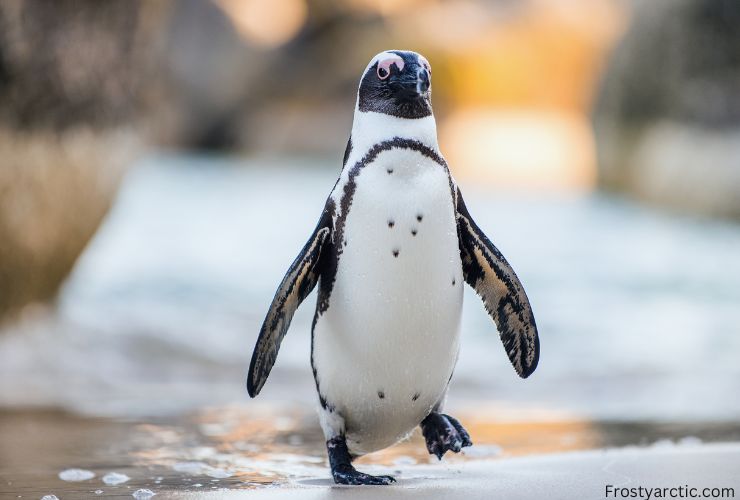Yes, penguins have knees and elbows, but they don’t appear the way they do in our anatomy. They are a modification to support their adaptation to their cold environment. The knees of penguins are covered with dense feathers and are tucked up inside.
The joints of the elbows and wrists are almost fused together. The arms or wings are modified into paddle-like flippers. The question “Do penguins have knees or not?” has been a trending question in 2016. However, it has been stated by studying the skeleton of penguins that the knees are present.
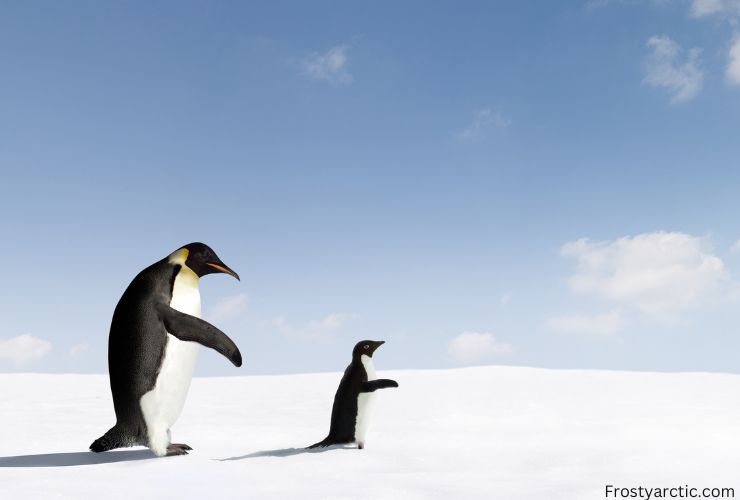
Let us know more about the structural benefits of penguin knees, the reason why they have been tucked inside and how the waddling occurs even when they have legs and knees. Stay tuned!
Do Penguins Have Knees or Kneecaps? Do they Have Elbows?
Talking about the penguins’ walk, we have said enough about their short legs outside, which are complete in structure if you see the skeleton.
So far, the kneecaps of the penguins are concerned; they do have them. However, penguins’ kneecaps are different from human kneecaps.
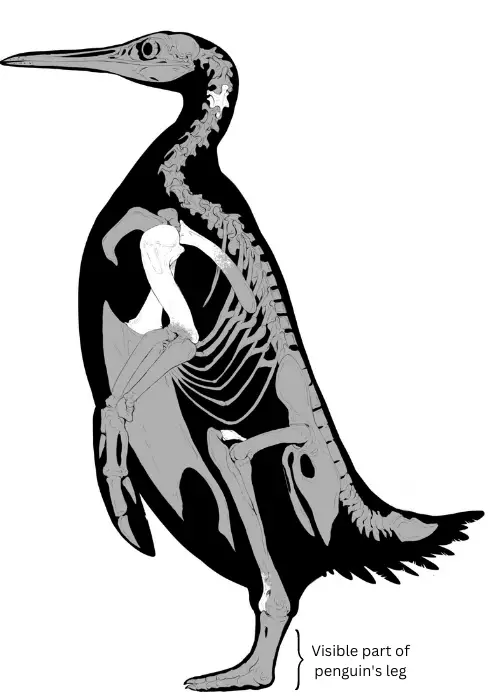
Moreover, not every bird has kneecaps, but penguins do have them. To see the difference between our kneecaps and penguins, a few things come under focus.
The shape of the penguin’s kneecaps is cube-like rather than like a small rectangle. Their kneecaps are not flattened.
They give a lever-like pull to the knee muscles and help them to straighten and bend. They help to support or assist the knee joint. Penguins, these bones are located in the tendon and help the knee joint to move and bend.
As the study says, the kneecaps are small, rectangular bones that are situated at the knee joint. Click the link to see the expert’s answer to the same question.
As we discuss the elbows of the penguins, they are there just like the knees and legs, which are a hidden secret. The elbows of penguins are flattened and broadened.
The elbow joint is almost fused with the wrist joint. This formation supports the tapered and flat flippers of the penguin. The flippers, of course, are designed for swimming.
Why Do Penguins Have Knees or Elbows?
The knees, though hidden, have amazing benefits for the penguins, different from what you expect. You can have a look at the ice sliding by the penguins and the first thought would be the push from the knees.

This is similar to how we give our bodies a push by bending the knees and accelerating forward.
Moreover, the shuffling done on snowy shores of the ocean is possible through knee push. Yet, this is just assumed evidence of their functional legs inside the body. In one way or another, the knees work naturally.
The yellow square you see shows the knee joint between the leg and the body of the penguin. So far, the elbows of the penguins are concerned; they tell you a different story. They are not bending the way knees are. They are part of penguins’ wings which are actually the flattened and tapered flippers. These flippers act as paddles to help them swim fast underwater. Gentoo penguins can swim up to 22 mph.
How Many Knees Does a Penguin Have?
Well, this is interesting. The old wife’s tale says that they have no legs because you can’t see them. So the knees were thought to be the little joints above the claws.

However, recent research has shown that the two knees with proper four-part legs are tucked inside the body. There are surely 2 knees and the visible ones near the claws are the ankles, not the surplus knees.
How Are Penguin Knees Built?
The knees of the penguins have the following features in terms of structure:
- Knee joint
- Kneecap within a tendon – cube-shaped to help in knee bending.
- Heavier knee bones, contrary to flying birds.
- Bent at 90 degrees inside the body as if giving a squatting position.
Why Do Penguins Waddle When They Have Knees?
They waddle, yes, and this is the most unique, clumsy, yet funny feature of the penguins, which makes them very special and different from others. The penguins waddle to show smartness while walking on otherwise difficult ice.
To understand why they waddle, you need to know why the knees don’t help them walk well, even if they are there. The penguins are flightless birds and their focus is more on swimming than flying.
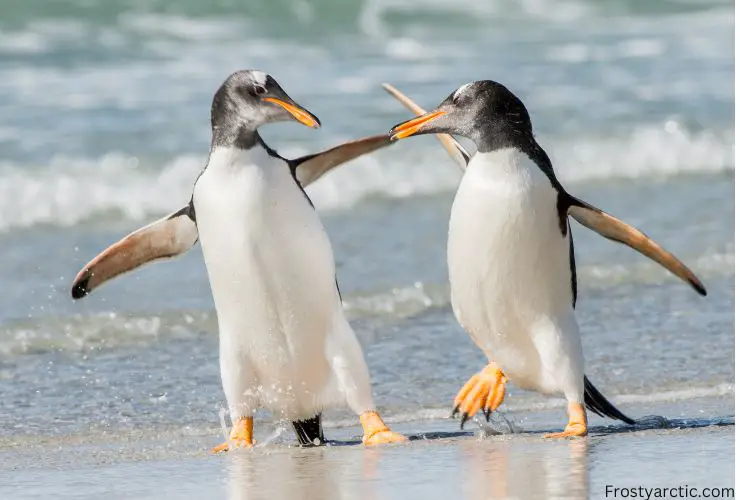
Thus, a hydrodynamic and streamlined body is required. For that, the knees are tucked in the body and only short webbed feet are visible. Furthermore, if the legs were too long with the knees outside, egg hatching would suffer.
So they have shorter legs and a unique gift of waddling that also saves their energy. The knees do serve other important tasks.
Frequently Asked Questions (FAQs)
Do Penguins Use Their Knees? Why Do Penguins Not Use Their Knees?
Apparently, you would find them waddling and think that they are not using their knees the way we do. But inwardly, the skeletal plan tells that they do use their knees in many body actions like sliding on the ice and shuffling on the snow shores.
What Animals Have No Knees?
To be very clear, what appears more justified is that legless animals are those who have no knees, like snakes, fish, invertebrates and marine animals. The four-footed animals are also thought to be knee-less, but like penguins, their knees are located a bit higher.
Do Penguins Bend Their Knees Like Other Animals?
The knees are actually tucked up inside the body. Penguins have many movements where they use propulsion to move forward or accelerate. The scientists are of the view that all these actions involve the movements of knees, which in turn tells that they would be bending. As we said earlier, the knees are bent at 90 degrees in the body to give the inner skeleton a squatting position.
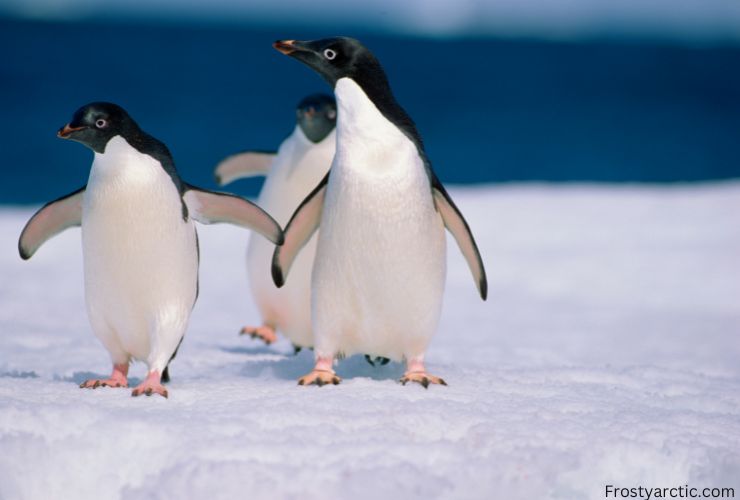
Do Penguins Injure Their Knees Because They Fall Often?
As penguins have denser bones because they are flightless birds, they don’t face more injuries. This is due to strong bones unlike birds which have hollow bones. Plus, the keens do not get injured when they fall because they are tucked up inside the body.
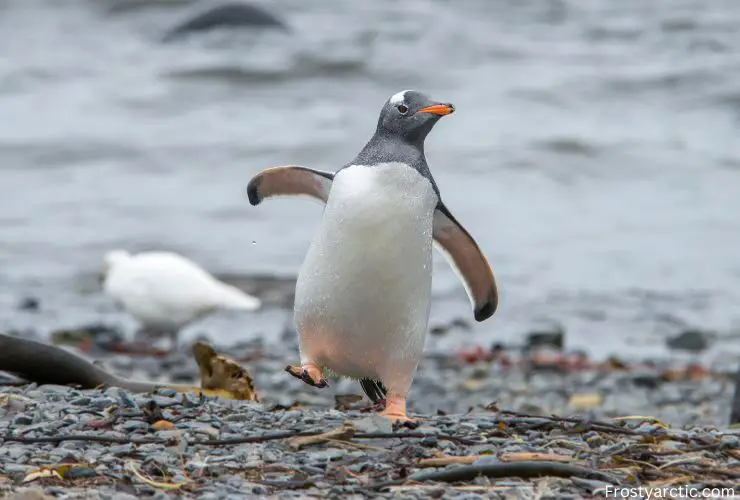
Conclusion
So you see, penguins’ knees which seem to be a mystery, have their own strong position, but actually inside the fur coat. The adaptations a penguin requires are many and the tucked-up knees along with short, rudder-like legs and webbed feet are some of the given adaptations. The tough habitat is survived by these flightless birds due to such adaptations.

